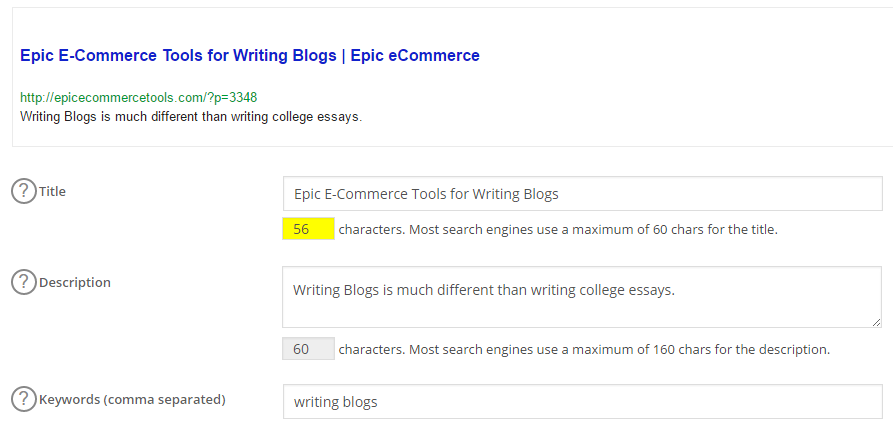Epic E-Commerce Tools for Writing Blogs
Writing Blogs is much different than writing college essays.
People browsing online usually don’t have the time that professors have to review your findings. I am the proud father of six wonderful children. Three kids are currently attending the local university. They are constantly asking me to review their essays. Writing blogs is something I’ve done a lot of over the last ten years – averaging about 2 a day. Now you know that I’m speaking from experience.
 Let’s discuss a few tools that will help your e-commerce company write SEO-healthy blog posts. This isn’t an all-inclusive list, but it will help get you started.
Let’s discuss a few tools that will help your e-commerce company write SEO-healthy blog posts. This isn’t an all-inclusive list, but it will help get you started.
Write about things that are relevant to your industry but don’t always force your brand down their throats. Write about what you think people would like to learn or know. If you have a different take on a topic that has gotten a lot of online (or offline) traction lately, let people know how you feel. Appeal to their emotions, answer burning questions, give them steps to success and how-to guides and share with them aspects of your business that they might not know.
Add a video or image. Make sure that it is relevant to the posts content and that its “Alternative Text” is the same as that post’s keyword. For example, the keyword for this article is “writing blogs.” Also, some people are link-clickers. So give them a link within the image. Having someone cute in the video or image doesn’t hurt either.
Keep sentences and paragraphs short for blogs. Most gurus say they should be under 20 words. That is not the case for college essays. In fact, the more educated you are, the more convoluted your sentences (and thought-processes in general) are expected to be. Online consumers and business owners come from all sorts of backgrounds – so play to the entire field. Keep the blog post short too – never more than 600 words – but seldom less than 300. If you have to make it longer, make “Part 1 of 2” and “Part 2 of 2” posts.
Keywords. I suggest using your keyword an average of once every 50 words. You don’t want to use it every sentence, but you do want them to remember it after they finish reading. If you’re using WordPress, make sure you have a good SEO plugin that takes the title, keywords, and description and promotes them online. This is an example of how to take advantage of a WordPress SEO plugin. As you can see from my example, your title and your description should all include the keyword(s).
Your title should enlist a response from at least a portion of your market. Here, for example, I am trying to reach blog writers who have had experience writing essays in college. I know that it doesn’t include all e-commerce owners, but that’s OK for this post. Also, make your first thought/sentence in the article a bigger font than everything else (Header 2, usually). Try to grab the reader’s attention.
Lastly, but not leastly (I know “leastly” isn’t a word, but it should be), give your readers a call to action. Sure, there should be 1-2 links throughout the post pointing them to your site, but in most cases you should also invite them to do something. I like writing blogs for companies that provide online business owners with trust seals and live chat software, so offering a free trial at the end of an article is always an option for me. Maybe you just want them to watch a video or reply to the post with their comments. Whatever your angle, make sure you have one.



